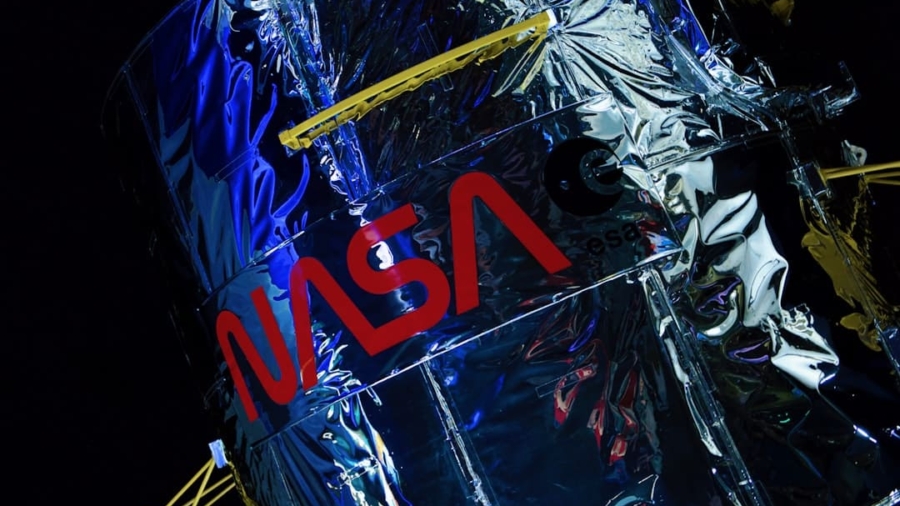The field of astronomy has undergone a significant transformation in recent years, primarily due to advancements in technology and data processing capabilities. Real-time astronomical data processing refers to the immediate analysis and interpretation of data collected from various astronomical observations, such as those from telescopes, satellites, and other observational instruments. This capability allows astronomers to respond swiftly to transient events, such as supernovae, gamma-ray bursts, and other celestial phenomena that may only be observable for a brief period.
The integration of real-time data processing into astronomical research has opened new avenues for discovery and has fundamentally altered how scientists engage with the cosmos. The advent of large-scale surveys and high-throughput observational instruments has resulted in an unprecedented volume of data being generated. For instance, projects like the Large Synoptic Survey Telescope (LSST) are expected to produce petabytes of data every year.
This deluge of information necessitates sophisticated processing techniques that can handle vast datasets efficiently and effectively. Real-time processing not only enhances the speed at which discoveries can be made but also improves the accuracy of the findings by allowing for immediate cross-referencing with existing databases and models. As a result, the ability to process astronomical data in real time is becoming increasingly critical in the quest to understand the universe.
Key Takeaways
- Real-time astronomical data processing is essential for analyzing and understanding celestial events as they occur.
- The importance of real-time data processing in astronomy lies in the ability to capture and analyze transient events such as supernovae and gamma-ray bursts.
- Challenges in real-time data processing in astronomy include the vast amount of data generated, the need for rapid analysis, and the requirement for accurate and reliable results.
- Artificial intelligence plays a crucial role in real-time astronomical data processing by enabling automated data analysis, pattern recognition, and anomaly detection.
- Using AI in real-time data processing offers advantages such as increased efficiency, improved accuracy, and the ability to handle large volumes of data in a timely manner.
The Importance of Real-Time Data Processing in Astronomy
Real-time data processing is crucial for several reasons, particularly in the context of transient astronomical events. These events often occur suddenly and may last only a short time, making timely detection and analysis essential. For example, when a gamma-ray burst is detected, astronomers must act quickly to gather additional data from other observatories to study the event’s characteristics and implications.
The ability to process data in real time allows researchers to coordinate follow-up observations across multiple wavelengths, leading to a more comprehensive understanding of such phenomena. Moreover, real-time processing facilitates the monitoring of celestial objects that exhibit variability over time, such as variable stars or active galactic nuclei. By continuously analyzing data streams, astronomers can identify changes in brightness or other properties that may indicate underlying physical processes.
This capability is particularly important for understanding the dynamics of our universe, as it enables scientists to track changes and make predictions about future behavior.
The Challenges of Real-Time Data Processing in Astronomy
Despite its many advantages, real-time data processing in astronomy presents several challenges that researchers must navigate. One significant hurdle is the sheer volume of data generated by modern observational instruments. The rapid accumulation of data can overwhelm traditional processing systems, leading to bottlenecks that hinder timely analysis.
For instance, during major astronomical events like solar eclipses or meteor showers, the influx of data can be so substantial that it becomes difficult to manage effectively without advanced computational resources. Another challenge lies in the complexity of the algorithms required for real-time analysis. Astronomical data is often noisy and may contain artifacts that can obscure genuine signals.
Developing algorithms that can accurately distinguish between noise and meaningful data is a non-trivial task. Furthermore, these algorithms must be capable of adapting to different types of observations and varying conditions, which adds another layer of complexity. The need for robust, flexible algorithms that can operate efficiently under real-time constraints is a critical aspect of advancing this field.
The Role of Artificial Intelligence in Real-Time Astronomical Data Processing
Artificial intelligence (AI) has emerged as a transformative force in many fields, including astronomy. Its application in real-time data processing offers innovative solutions to some of the challenges faced by astronomers today. AI techniques, particularly machine learning algorithms, can analyze vast datasets quickly and identify patterns that may not be immediately apparent through traditional methods.
By training models on historical data, AI can learn to recognize specific features associated with various astronomical phenomena, enabling it to make predictions or classifications in real time. One notable application of AI in this context is anomaly detection. Machine learning algorithms can be trained to identify unusual patterns or outliers in data streams, which may indicate the presence of a transient event or an unexpected celestial object.
This capability allows astronomers to focus their attention on significant findings while filtering out irrelevant information. Additionally, AI can assist in automating routine tasks such as data calibration and preprocessing, freeing up researchers to concentrate on more complex analyses and interpretations.
Advantages of Using AI in Real-Time Data Processing
The integration of AI into real-time astronomical data processing offers numerous advantages that enhance both efficiency and accuracy. One primary benefit is speed; AI algorithms can process large volumes of data much faster than traditional methods. This rapid analysis is crucial for responding to transient events where timing is essential.
For example, during a supernova explosion, every second counts when coordinating follow-up observations across different observatories. Another significant advantage is the ability to improve accuracy through advanced pattern recognition capabilities. AI systems can learn from vast datasets and refine their models over time, leading to increasingly precise classifications and predictions.
This capability is particularly valuable in distinguishing between different types of celestial objects or events that may share similar characteristics but have different underlying causes. Furthermore, AI can help reduce human error by automating repetitive tasks and providing consistent results across multiple analyses.
Examples of AI Applications in Real-Time Astronomical Data Processing
Machine Learning for Transient Event Detection
One notable example is the Zwicky Transient Facility (ZTF), which uses machine learning algorithms to classify light curves and detect transient events such as supernovae. By analyzing the brightness changes of celestial objects over time, researchers can identify these events with remarkable accuracy.
Deep Learning for Gravitational Wave Detection
Another example is the use of deep learning models for gravitational wave detection at the Laser Interferometer Gravitational-Wave Observatory (LIGO). Machine learning algorithms analyze data from LIGO’s detectors in real-time, enabling the rapid identification of gravitational wave signals generated by colliding black holes or neutron stars.
Enhancing Detection Capabilities and Multi-Messenger Astronomy
The application of AI in these projects not only enhances detection capabilities but also facilitates immediate follow-up observations by other telescopes. This leads to the development of multi-messenger astronomy, a field that combines information from gravitational waves and electromagnetic signals, providing a more comprehensive understanding of celestial events.
Future Prospects of AI in Real-Time Astronomical Data Processing
The future prospects for AI in real-time astronomical data processing are promising and suggest a continued evolution in how astronomers conduct research. As computational power increases and algorithms become more sophisticated, we can expect even greater advancements in the speed and accuracy of data analysis. Future AI systems may incorporate more advanced techniques such as reinforcement learning or generative adversarial networks (GANs), which could further enhance their ability to model complex astronomical phenomena.
Moreover, collaborative efforts between astronomers and computer scientists are likely to yield innovative solutions tailored specifically for astronomical applications. The development of open-source platforms for sharing AI models and datasets could foster a more collaborative environment within the astronomical community, accelerating progress and enabling researchers worldwide to benefit from shared knowledge and resources. As we continue to explore the universe’s mysteries, AI will undoubtedly play an increasingly central role in shaping our understanding.
The Impact of AI on Real-Time Astronomical Data Processing
The integration of artificial intelligence into real-time astronomical data processing represents a paradigm shift in how researchers approach the study of celestial phenomena. By harnessing the power of AI, astronomers can analyze vast datasets with unprecedented speed and accuracy, enabling them to respond swiftly to transient events and uncover new insights about the universe. As technology continues to advance, the collaboration between AI and astronomy will likely lead to groundbreaking discoveries that deepen our understanding of the cosmos and our place within it.
The impact of AI on this field is profound, paving the way for a new era of exploration and discovery that was once thought impossible.
In a related article, How to Choose Your Child’s First Tablet, parents can find valuable information on selecting the right device for their children. Just as astronomers rely on advanced technology like AI to enhance real-time data processing, parents can leverage technology to provide educational and entertaining experiences for their kids. By understanding the importance of choosing the right tablet for their child, parents can ensure that their little ones have access to safe and age-appropriate content.
FAQs
What is AI?
AI, or artificial intelligence, refers to the simulation of human intelligence in machines that are programmed to think and act like humans. This includes tasks such as learning, problem-solving, and decision-making.
How is AI used in real-time astronomical data processing?
AI is used in real-time astronomical data processing to analyze and interpret large volumes of data collected from telescopes and other astronomical instruments. AI algorithms can help identify patterns, classify objects, and make predictions, allowing astronomers to make sense of the vast amount of data they collect.
What are the benefits of using AI in real-time astronomical data processing?
Using AI in real-time astronomical data processing can help astronomers process data more efficiently, identify new astronomical phenomena, and make discoveries that may have been missed using traditional methods. AI can also help automate repetitive tasks, freeing up astronomers to focus on more complex analysis and research.
What are some examples of AI techniques used in real-time astronomical data processing?
Some examples of AI techniques used in real-time astronomical data processing include machine learning, deep learning, neural networks, and pattern recognition algorithms. These techniques can be used to classify celestial objects, detect anomalies in data, and predict the behavior of astronomical phenomena.
Are there any challenges or limitations to using AI in real-time astronomical data processing?
Some challenges and limitations of using AI in real-time astronomical data processing include the need for large, high-quality datasets for training AI algorithms, the potential for bias in AI decision-making, and the complexity of interpreting AI-generated results. Additionally, AI algorithms may require significant computational resources, which can be a limiting factor for some astronomical research facilities.



